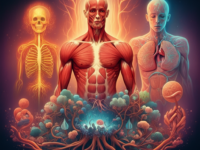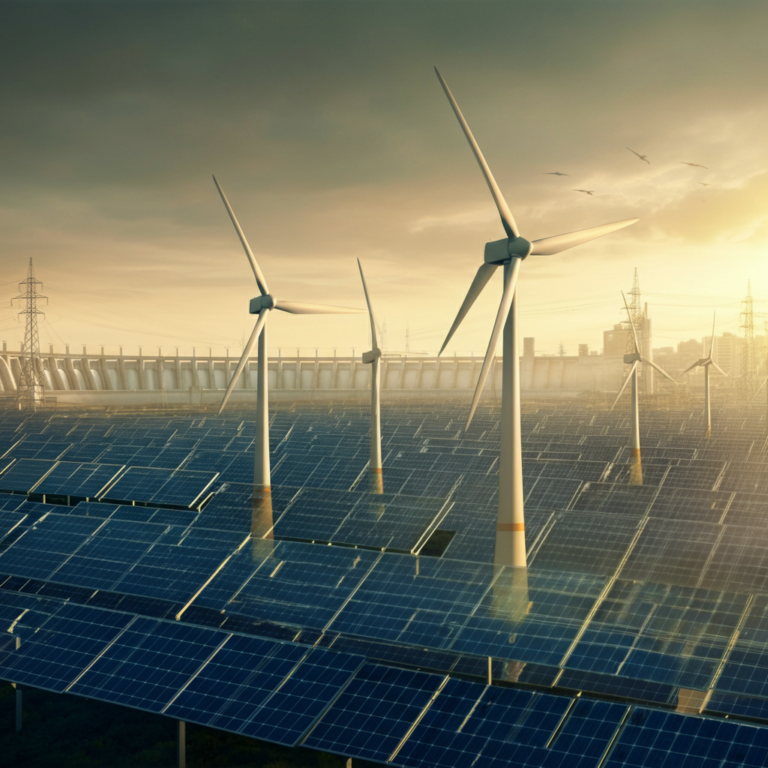Renewable energy has become a buzzword in discussions about the environment, sustainability, and the future of global energy. Governments, businesses, and individuals are increasingly turning to renewable sources to reduce greenhouse gas emissions, fight climate change, and ensure energy security. But how does this green energy we hear so much about actually work? What makes it different from traditional energy sources, and can it really power our future?
This blog explores the science behind renewable energy sources, breaking down the complex systems at play, explaining their benefits, and highlighting how they are transforming how we power the world.
What is Renewable Energy?
Renewable energy refers to power generated from natural resources that replenish themselves over time. Unlike fossil fuels—such as coal, oil, and natural gas—renewable sources like solar, wind, and hydropower aren’t finite and don’t contribute heavily to climate change.
At its core, what makes renewable energy unique is its reliance on forces of nature to produce electricity or fuel. For instance:
- The sun’s rays can be converted into electricity or heat.
- Wind can turn turbines to generate power.
- Flowing water can produce mechanical energy used to create electricity.
These resources stand in stark contrast to fossil fuels, which release harmful carbon dioxide and other pollutants into the atmosphere when burned. Renewable energy, on the other hand, is clean, sustainable, and increasingly affordable.
The Core Types of Renewable Energy
To understand renewable energy, it’s essential to examine the main types and the science that powers them.
Solar Energy
How it Works:
Solar energy harnesses sunlight—energy from the sun’s radiation—using photovoltaic (PV) cells or solar collectors. PV cells, commonly found in solar panels, contain materials like silicon that generate electricity when exposed to sunlight. This process, called the photovoltaic effect, allows electrons to move freely and create a flow of electricity.
Advantages:
- Abundant and available even in remote areas.
- Zero emissions when producing electricity.
- Scalable, from rooftop installations to massive solar farms.
Limitations:
- Efficiency depends on sunlight availability, so production can dip during cloudy days or nighttime.
- Requires energy storage solutions like batteries for continuous power supply.
Wind Energy
How it Works:
Wind energy is generated when the kinetic energy of moving air turns the blades of a wind turbine. Inside the turbine, the spinning blades drive a generator, converting mechanical energy into electricity.
Advantages:
- Highly efficient in wind-rich regions.
- Minimal environmental impact during operation.
Limitations:
- Wind variability can lead to inconsistent power generation.
- Turbines are typically limited to areas with steady wind flows, such as coastal regions or plains.
Hydropower
How it Works:
Hydropower uses moving water to generate electricity. Most commonly, dams are constructed to control water flow, creating reservoirs. When water is released, it turns turbines connected to generators. This process converts the kinetic energy of water into electricity.
Advantages:
- One of the oldest and most stable forms of renewable energy.
- Consistent and reliable power source when water reserves are steady.
Limitations:
- Disrupts aquatic ecosystems and displaces local communities.
- Limited by geographical constraints—requires rivers or large bodies of water.
Geothermal Energy
How it Works:
Geothermal energy taps into heat stored beneath the Earth’s surface. This heat can be used directly to warm buildings or power turbines that generate electricity. The energy mainly comes from naturally occurring underground reservoirs of steam or hot water.
Advantages:
- Reliable and available year-round.
- A great option for regions near tectonic plate boundaries.
Limitations:
- Location-specific, with limited access to geothermal reservoirs.
- High upfront costs for drilling and infrastructure.
Biomass Energy
How it Works:
Biomass energy comes from organic materials like wood, crops, and animal waste. These materials are burned or converted into biofuels (like ethanol or biodiesel) to produce energy.
Advantages:
- Provides a way to repurpose agricultural and industrial waste.
- Can be used for heating, electricity, or as fuel for transportation.
Limitations:
- Burning biomass can release carbon dioxide, though the impact is lower than fossil fuels.
- Must be sustainably managed to avoid land degradation.
Why Renewable Energy is the Future
Sustainability
Unlike fossil fuels, renewable energy sources won’t run out as they are constantly replenished through natural processes. This ensures a long-term solution for our global energy needs.
Reducing Carbon Footprint
Renewables produce little to no greenhouse gas emissions during operation. Transitioning to renewable energy is a key step in mitigating climate change and reducing air pollution.
Lower Operational Costs
Despite higher upfront investments, renewable energy systems like solar panels and wind turbines have very low operational and maintenance costs. Over time, they often provide more economic savings than fossil fuels.
Energy Security
By reducing dependence on imported fuels, renewables offer countries greater energy independence and stability.
Innovation and Job Creation
The renewable energy sector is a hotbed for technological innovation and job opportunities. According to the International Renewable Energy Agency, the sector employed over 12.7 million people globally in 2022—a number projected to grow rapidly.
Challenges to Overcome
While renewables hold immense promise, challenges remain:
- Energy Storage: Storing energy for use during non-productive periods (e.g., nighttime for solar or calm days for wind) requires advances in battery or other storage technology.
- Infrastructure: Transitioning to renewable energy demands infrastructure upgrades, such as modern power grids that incorporate intermittent energy sources.
- Initial Costs: Despite long-term savings, the upfront costs of renewable energy systems can deter adoption.
Continuous investment in research, coupled with supportive policies, will play a crucial role in overcoming these barriers and driving adoption forward.
How You Can Support the Renewable Revolution
- Switch to Renewable Energy Providers: Many energy companies now offer renewable energy plans for homes and businesses.
- Invest in Rooftop Solar Panels: Take advantage of tax credits and incentives if available in your area.
- Educate Yourself and Others: Share information, support sustainable policies, and advocate for the transition to renewable energy.
By making these changes, individuals and businesses alike can reduce their environmental impact and contribute to a greener future.
Building a Sustainable Future Together
Renewable energy is not just a scientific breakthrough—it’s a lifeline for our planet and future generations. By harnessing the power of the sun, wind, water, and earth, we can move away from harmful fossil fuels and build a cleaner, more sustainable energy system.
Curious about how renewable technologies can transform your home or business? Stay informed and take action today. Collectively, our small steps create a massive impact.





















0 Comments